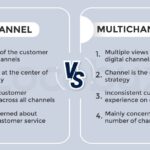Giving a prevalent client experience doesn’t mean very much to consumer loyalty, it’s likewise a part in Google’s rankings. Internet business destinations present exceptional difficulties for Web optimization – they have a ton of moving parts, with frequently hundreds in the event that not a huge number of pages and dynamic parts.
In the high speed universe of online retail, the job Website optimization plays in client experience can in some cases lose all sense of direction in the mix. Be that as it may, obliviousness or negligence of Web optimization best practices can affect a site’s perceivability in web crawlers, natural traffic, and eventually changes.
The following are four Web optimization methodologies to keep top of brain to further develop UX in the powerful universe of online business:
Further develop Site Speed
A vital part with a decent client experience is a quick stacking site. It’s likewise been a positioning variable for Google beginning around 2010. With how much pictures and dynamic components, web based business destinations frequently load gradually, prompting lost clients and transformations.
The initial step is familiarity with what site speed means for UX. On the off chance that you use Google Examination, investigate bob rate and site speed information to check whether there is an issue. Run your URL through a free instrument, for example, GTmetrix or Google’s PageSpeed Bits of knowledge to figure out how your site piles up on work area/by and large site speed. For versatile destinations explicitly, utilize Google’s Test My Site apparatus to measure site execution.
On the off chance that page stacking time is an issue, tackle some improvement strategies. For instance, recognize huge pictures/documents (north of 150 bytes) and pack them utilizing Photoshop, or a free picture pressure instrument. Influence program reserving so rehash guests don’t need to reload the whole page each time totally.
Lessen pointless sidetracks as they can dial back page stacking time, yet make certain to verify whether the first page has leftover Web optimization esteem (for example huge backlinks). Assuming it does, keep the divert set up.
Go for the gold, Content
Google needs to track down quality exceptional substance on each URL, and for retailers this can some of the time be a battle. As well as attempting to make extraordinary, engaging substance for each page, traders additionally should be careful about separated search pages and item boundaries making too some low-esteem pages that can be filed by Google. According to a Search engine optimization point of view, this can weaken page authority and bulge Google’s file with almost copy pages.
To manage this issue (for example different varieties and sizes of a similar sweater), doing one of three things: remember a sanctioned tag for item variety pages that focuses to the primary item page, place a “noindex” label on the page, or block the variety with robots.txt is ideal.”
Web based business destinations likewise need to anticipate lapsed content (items that are sold out, unavailable, stopped or unavailable). The arrangement needs to focus on the client and guarantee Website optimization esteem isn’t lost.
Executing a 301 divert is the ideal decision as a rule. In the first place, it gives clients the most exceptional data on an item they are searching for. Furthermore, on the off chance that a page had huge backlinks, a divert moves any connection esteem the first URL had.
Focus on Portable Experience
Late examination found that over 57% of online traffic is currently coming from cell phones and tablets, so versatile should be vital in any UX conversation. An extra versatile related Search engine optimization concern coming in 2018 is the presentation of Google’s portable first record. This implies Google will decide rankings essentially founded on portable experience and content. Basically, internet business destinations need to guarantee clients have a comparable encounter on both portable and work area. A responsive or dynamic serving site is the most ideal choice to give an equivalent client experience.
Screen Site Changes
Changes to HTML title, “noindex” labels, broken canonicals, broken diverts, 301 sidetracks transforming into 302s and more can devastatingly affect Web optimization and, likewise, client experience. Be proactive and converse with the groups required about Search engine optimization and the effect these sorts of changes can have on the site overall.
Observing should be possible physically by watching out for extreme changes to natural traffic to enter presentation pages in Google Examination, or by utilizing a site checking administration which makes you aware of any progressions that could affect Search engine optimization.



